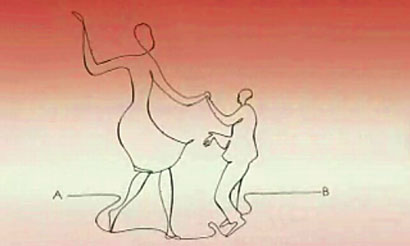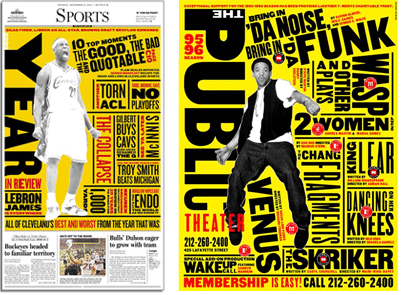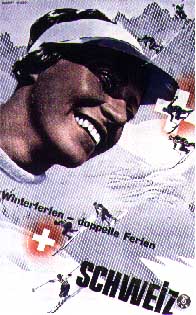Many stories of dubious similarities in this edition of Quipsologies.

Following up on a previous Quip about strange book-binding materials, it seems Le Corbusier really loved his dog Pinceau. (via The Gutter)
An on-line collection of rare books on calligraphy and penmanship.
Keep up your drawing skills! (via Boing Boing)
Before computers, graphic design was more “material”: 072 vs. Letramax 2000, one-coat vs. wax, rapid-o-graph vs. ruling pen. Perhaps this can explain my current obsession over the Aerogel-based collection system of the recently-returned Stardust spacecraft. Aerogel is, at 99.8 percent air, the least-dense solid known to man and is 39 times a better insulator than the best fiberglass insulation. More amazing Aerogel facts can be found here.
From the Annals of Strange Branding Bedfellows: Johnson & Johnson’s Acuvue (now with Hydraclear) + a Swedish women’s curling team (world champions) + the heavy-metal band Hammerfall = the epic video Hearts on Fire. (via The Curling News)
On the art of Tootsie Pop wrappers.

Backlit ad for NYCtoTahitiNonstop.com from March 2005. Agency: Saatchi & Saatchi. Illustrator: Dennis Clouse, Cyclone Design

Still from Hilton Hotel television commercial, January 2006. Agency: Young & Rubicam
Over the past several years idle heiress Paris Hilton’s activities have certainly contributed to an overall distaste for the family name. Recently, the hotel chain founded by her great-grandfather has released a series of television commercials created by Young and Rubicam. In each spot, a line which connects letter “A” to “B” morphs into various figures.
Unfortunately, AdCritic.com does not have an illustration credit for the Hilton spots, so we can’t yet say for sure who drew this. Yet, given that the NYC to Tahiti campaign featured a line which signified travel between two spots; you have to wonder why the folks at Y&R applied the same metaphor and the same technique for a client in the same kind of business.
But what if you steal from yourself? The current Intel chip ad for Apple is a shot-for-shot copy of a music video for The Postal Service’s song “Such Great Heights”. Both were directed by Josh & Xander.
Finally, if you’re going to steal, at least make it funny.

Very awesome map of the North America showing only subway systems. Oddly peaceful. [Via Gothamist]
Next generation barcodes. They actually work. [Thanks to d.u.menon for the link]
Separated at adolescence:

To the left, a year-in-review spread for the Cleveland Plain Dealer, designed by Emmet Smith. To the right, Paula Scher’s poster for Bring in ’Da Noise, Bring in ’Da Funk for the Public Theater, ’95 season.
A new, thought-bubbly identity for the Czech Republic, which apparently has caused a ruckus. [Thanks to Jan Sabach for the link. He is Czech]









Mark-
not surprised you couldnt find the illustrator credit on that Hilton crap. It was most likely the art director (no, they didn't call me to get a quote).
But, Tahiti did, and its not surprising that he doesnt include that work on his website (I helped this guy Dennis sue Landor 7 years ago when they sent me his work and asked to copy it for Skyy Vodka. I guess that the thx you get for being ethical).
On Jan.23.2006 at 11:10 AM